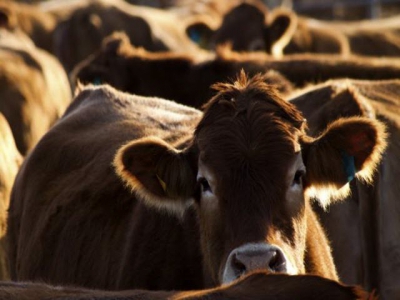Cattle placements higher than anticipated

March weather combined with previous winter conditions creating uncertainty about cattle market conditions.
The U.S. Department of Agriculture has released the March “Cattle on Feed” report, which shows that cattle and calves on feed for the slaughter market in the U.S. for feedlots with a capacity of 1,000 head or more totaled 11.8 million head on March 1, 2019, a 1% increase from March 2018. Analysts had expected the number of cattle on feed to be nearly even with last year.
The big surprise, however, was found in the number of placements in feedlots during February, with USDA reporting a total of 1.86 million head, 2% above 2018. The average pre-report trade estimate was actually for a 4% decline from the prior year.
Derrell Peel, Oklahoma State University Extension livestock marketing specialist, said the February placement total is the largest for the month since 2000. He also noted that the March “Cattle on Feed” report brings the feedlot data up to date and back on schedule following the federal government shutdown this winter.
USDA reported that net placements were 1.79 million head. During February, placements were 340,000 head for cattle and calves weighing less than 600 lb., 345,000 head for those weighing 600-699 lb., 530,000 head for those weighing 700-799 lb., 442,000 head for those weighing 800-899 lb., 135,000 head for those weighing 900-999 lb. and 65,000 head for those weighing 1,000 lb. and greater.
Marketings of fed cattle during February totaled 1.68 million head, slightly above 2018. This was in line with trade expectations.
Other disappearance totaled 66,000 head during February, 16% above 2018, USDA reported.
Weather creating uncertainty
According to Peel, March weather combined with previous winter conditions continue to create uncertainty about cattle market conditions.
“The long, cold winter has been characterized by persistent and deep snow in some places and wet, sloppy conditions in others,” he said. “Now, floods are devastating large regions along the Mississippi and Missouri river basins, with additional flooding expected. The impacts on crop and livestock markets are likely to be felt for many weeks and months to come.”
Peel said the cattle and beef markets are currently already being affected by lower fed cattle weights, lost performance and, no doubt, increased animal morbidity and mortality.
“The timing of the floods is particularly insidious given that it is calving season for many cow/calf operations," he said. "This is likely to result in cattle losses even greater than would be expected during floods.”
It will take many weeks to fully assess the cattle losses due to winter weather and the floods, Peel added.
Agriculture Secretary Sonny Perdue told Fox Business Network over the weekend that up to 1 million calves are estimated to have been lost due to the recent bomb cyclone storm and flooding.
Có thể bạn quan tâm
 Biochar may help tackle methane emissions from dairy manure
Biochar may help tackle methane emissions from dairy manure Several University of California-Merced professors will research how biochar can help reduce methane emissions from manure on dairies.
 Choice for grazing cattle on wheat based on gain or grain
Choice for grazing cattle on wheat based on gain or grain Whether cattle producers in Texas High Plains continue to graze cattle on wheat pastures depends on if end goal is cattle gain or wheat grain production.
 Cornell model helps reduce nitrogen losses from dairy farms
Cornell model helps reduce nitrogen losses from dairy farms CNCPS can be used to assess environmental impact of dairy cattle and to help nutritionists improve utilization efficiency of diets and cattle in environmental